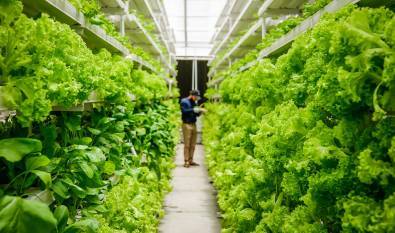MUMBAI, 22 April 2024: The sprawling cityscape, once a symbol of progress, is now facing new challenges. Food security, environmental sustainability, and community engagement are concerns demanding innovative solutions.
Enter urban farming, a movement transforming concrete jungles into vibrant spaces of local food production. This article delves into the benefits of urban agriculture for citizens, explores India's potential to become a leader in this field, examines the challenges and advantages, and looks at the global demand for this sustainable practice.
Benefits for Citizens: Fresh, Local, and Sustainable
Urban farming offers a multitude of advantages to city dwellers. Firstly, it provides access to fresh, locally grown produce. This translates to increased consumption of fruits, vegetables, and herbs, often surpassing the quality and variety found in supermarkets. The shorter distance from farm to table reduces spoilage and carbon footprint associated with transportation.
Secondly, urban farms contribute to a more sustainable city ecosystem. Green spaces mitigate the urban heat island effect, improve air quality, and provide natural habitats for pollinators. Additionally, they can manage stormwater runoff by promoting rainwater harvesting and reducing the burden on drainage systems.
Thirdly, urban agriculture fosters a sense of community and social connection. Community gardens become hubs for shared knowledge, collaboration, and social interaction. Residents of all ages can participate, fostering a sense of ownership and pride in their local food system.
India's Potential: A Land of Opportunity
India, with its vast population and diverse climate, presents a unique opportunity for urban farming leadership. Existing rooftop spaces, underutilized land pockets, and vertical farming techniques can be harnessed to cultivate a sustainable food system.
The government's initiatives like the National Mission on Sustainable Agriculture (NMSA) and Smart Cities Mission can provide a framework for promoting urban agriculture. Investments in infrastructure, training programs, and research can empower local communities to adopt this practice. Furthermore, integrating urban farming into school curriculums can educate future generations on sustainable food production.
Challenges and Advantages: Balancing Growth with Efficiency
Urban farming is not without its challenges. Limited space necessitates efficient land use and vertical farming techniques. Water availability can be an issue, requiring innovative solutions like rainwater harvesting and greywater recycling. Additionally, managing pests and diseases in an urban environment demands organic and integrated pest management strategies.
Despite these challenges, the advantages of urban farming are undeniable. Reduced transportation costs lower food prices, making fresh produce more accessible. Urban farms can create local jobs, particularly in marginalized communities. The social and environmental benefits, coupled with increased food security, make urban agriculture a compelling solution for burgeoning Indian cities.
Global Outlook: A Growing Movement
The demand for urban farming is rising globally. Cities worldwide are facing similar challenges of population growth, resource scarcity, and climate change. Urban agriculture offers a tangible solution, attracting investments and sparking innovation. Technological advancements in areas like hydroponics and aquaponics are further propelling the growth of this sector.
Cultivating a Brighter Future
Urban farming is not just a trend; it's a paradigm shift in our approach to food production and urban living. By harnessing India's vast potential, we can create a model for sustainable cities that are not only self-sufficient but also foster a sense of community and environmental well-being. As we cultivate our cities, we cultivate a brighter future for generations to come.
Image credit: UrbanKissan























